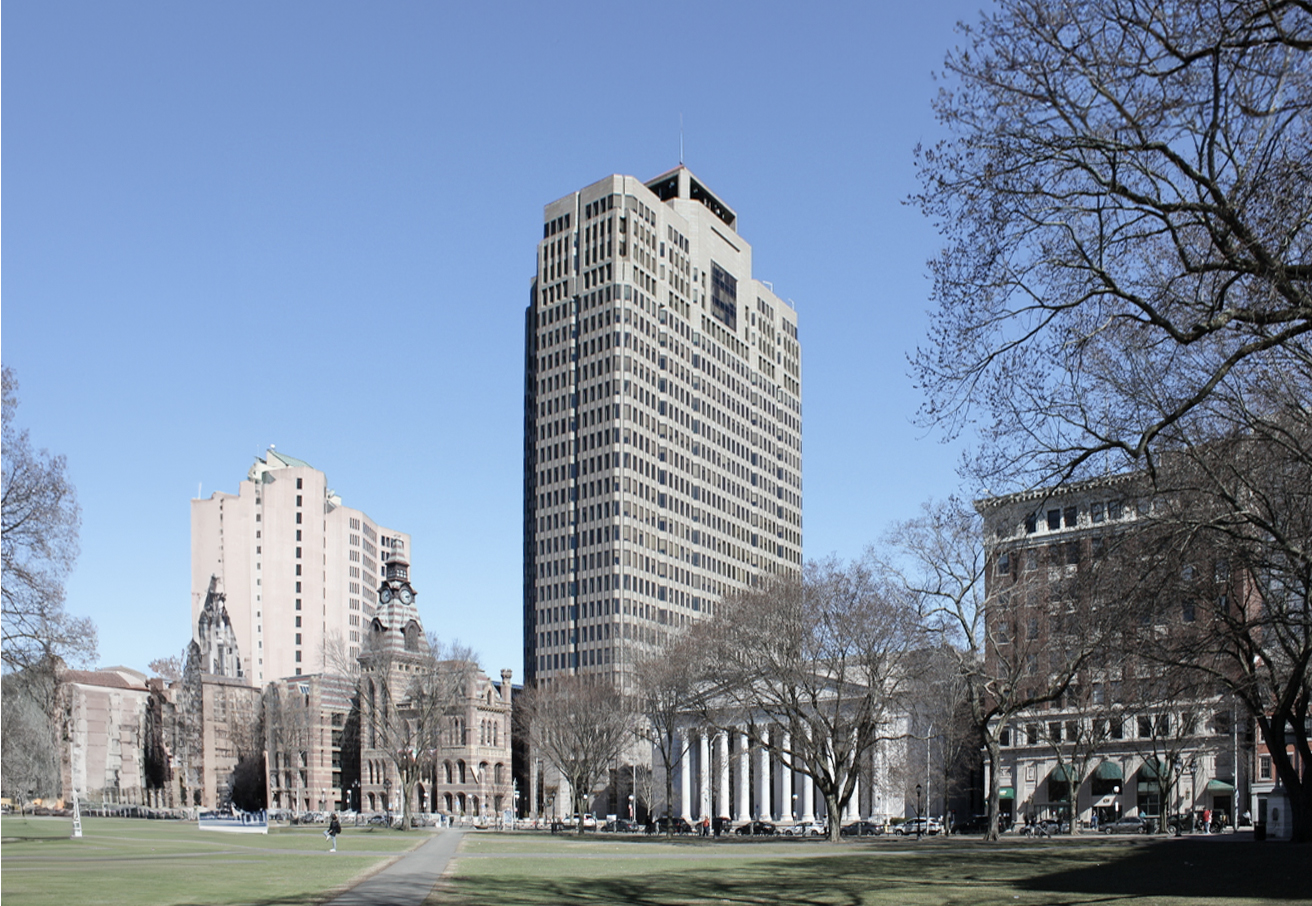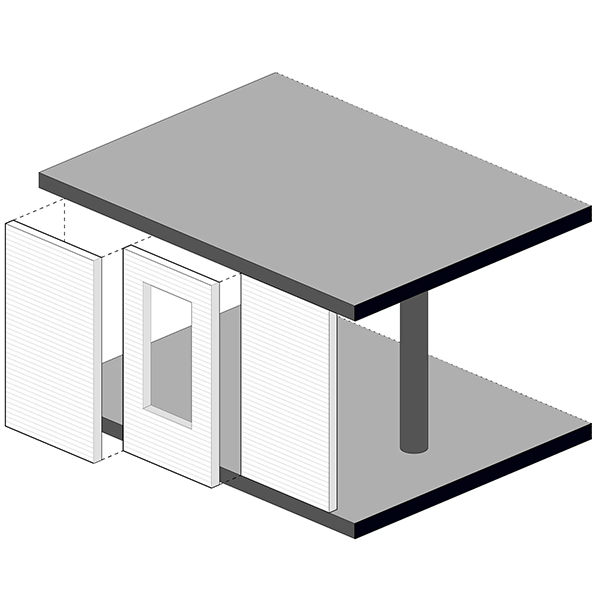The Connecticut Financial Center is a Postmodernist skyscraper designed by Crang and Boake, and built between 1987 and 1990 in New Haven, CT.
Its precise street address is 157 Church Street, New Haven, CT. You can also find it on the map here.

The Connecticut Financial Center is a Postmodernist skyscraper designed by Crang and Boake, and built between 1987 and 1990 in New Haven, CT.
Its precise street address is 157 Church Street, New Haven, CT. You can also find it on the map here.
Crang and Boake was the architecture firm in charge of the architectural design.
That being said, architecture is a complex discipline involving many professionals from different fields, without whom this building would have not been possible. We will surely be leaving out a lot of names here, but at the very least we know that there was one other part involved, that was Chase Enterprises as the Main Contractor.
The Connecticut Financial Center can be categorized as a Postmodernist building.
Postmodernism in architecture emerged in the United States during the late 1960s as a reaction against the starkness of the International Style, which part of the new generation of architects argued was too impersonal, sterile, and disconnected from historical and cultural contexts.
Postmodernism challenged the International Style's austerity by reintroducing historical elements and ornamentation, although this time not as literally as in the Neo-Classic buildings. Instead, they reinterpreted them within the context of modern materials and construction techniques.
Postmodern buildings often feature bold, contrasting colors, unconventional forms, and a playful blend of various architectural elements from different eras and cultures.
In the United States, Postmodernism was not just an aesthetic choice but also a philosophical stance. It represented a democratization of design, where architects sought to create buildings that were accessible and meaningful to a broader range of people, not just designers and intellectuals.
The Connecticut Financial Center was completed in 1990. By 1990 the Postmodernism movement was experiencing a transition. Critics argued that Postmodernism, initially a rebellious and innovative style, had become formulaic and commercialized, and so the trend started moving away from blending historical styles, irony, and playful ornamentation, and begun to give way to emerging architectural trends concerned with more present matters such as technology, ecology or sustainability.
The Connecticut Financial Center was kind of late to Postmodernist movement, which in some ways might make it seem older than it really is.The Connecticut Financial Center reaches an architectural height of 374ft (114m), 384ft (117m) if you count the antenna. It has a total of 28 floors.
The building sits on a 19,752 sqf (1,835m2) piece of land , and offers a total of 467,476 sqf (43,430m2) of usable space.
In regards to parking space, the building has a total of 650 spots available, which roughly equals 23 spots per floor (above ground), or one parking spot per every 721 sqf (67m2) of usable space.
Ever since opening its doors to the public in 1990, the Connecticut Financial Center has mainly been used as Commercial space.
The Connecticut Financial Center uses a frame structure made of columns and concrete and steel slabs.
A frame structure uses a combination of beams and columns to sustain the building's weight. The walls in this case are non-load bearing, which allows for more flexibility when distributing the interior spaces.
The facade uses a non-load bearing modular, or panelized system. This type of facade can function as either a window wall or a curtain wall, depending on the design. Unlike traditional glass curtain walls or window walls though, the modular facade is not primarily composed of glass. Instead, it often features more opaque panels that mimic masonry or stone-clad finishes, with smaller windows cut into the panels.
This type of facade allows the building to benefit from the modern qualities of a curtain wall while giving the design team flexibility to achieve visual aesthetics beyond the all-glass modern skyscraper.

From an aesthetic point of view, the facade features granite and glass, creating a continuous grid of narrow, floor-to-ceiling windows. The facade "bends" inwards, mostly following the rhythm of the interior frame structure, creating depth and rhythm on the facade.
At ground level the building sits on a 4-story high base mostly clad in granite, featuring only a few, but quite large glass openings.
At the top the building is topped by 3 tent-like roofs.